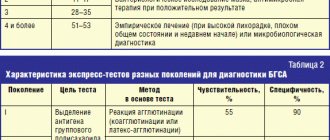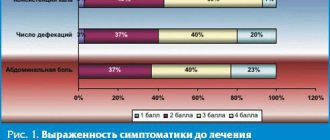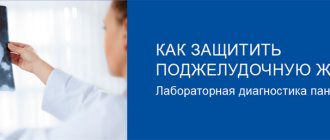annotation
Acute pancreatitis, being an exotic disease at the beginning of the 20th century, currently occupies one of the first places in the list of “acute abdomen”. However, there is still ongoing debate about treatment tactics caused by the lack of a unified classification and diagnostic and tactical algorithm. Existing foreign standards (European, British, etc.) are poorly adapted to the conditions of domestic healthcare. These protocols for the diagnosis and treatment of acute pancreatitis were developed in the pancreatology clinic of the St. Petersburg Research Institute of Emergency Medicine (headed by A.D. Tolstoy, MD) and are based on the experience of treating more than 10,000 patients with verified destructive pancreatitis, as well as the results of our own experimental research. The central point of the protocols is the refusal of early surgical interventions in the vast majority of patients with acute pancreatitis, the alternative to which is early “terminating” intensive care. Thus, achieving an aseptic course of the disease is the main way to improve the results of treatment of patients with destructive pancreatitis.
These protocols were approved by the Association of Surgeons of the North-West of the Russian Federation on March 12, 2004 and presented to the medical community of St. Petersburg on March 17, 2004 at the Round Table meeting in St. Petersburg Research Institute of Emergency Medicine named after. I.I. Dzhanelidze. A five-year (1999-2003) testing of the tactics set out in the protocols made it possible to reduce the mortality rate from destructive pancreatitis from 25% to 13.6%, the incidence of purulent complications from 30% to 14%, and the incidence of sepsis from 9.5% up to 4.8%.
The authors of the recommendations invite surgical teams to take part in testing the proposed protocol. You can discuss the presented material on the specialized forum of the School of Pancreatology project.
© St. Petersburg Research Institute of Emergency Medicine named after. I.I. Dzhanelidze, 2004
Acute pancreatitis (AP) is characterized by the development of pancreatic edema (edematous pancreatitis) or primary aseptic pancreatic necrosis (destructive pancreatitis) followed by an inflammatory reaction.
Acute destructive pancreatitis has a phase course, and each phase corresponds to a specific clinical form.
I is enzymatic , the first five days of the disease, during this period the formation of pancreatic necrosis of varying extent, the development of endotoxemia (the average duration of hyperenzymemia is 5 days), and in some patients, multiple organ failure and endotoxin shock. The maximum period for the formation of pancreatic necrosis is three days, after this period it does not progress further. However, with severe pancreatitis, the period of formation of pancreatic necrosis is much shorter (24-36 hours). It is advisable to distinguish two clinical forms: severe and non-severe AP.
• Severe acute pancreatitis. The incidence is 5%, mortality is 50-60%. The morphological substrate of severe AP is widespread pancreatic necrosis (large focal and total-subtotal), which corresponds to severe endotoxicosis.
• Mild acute pancreatitis. The incidence is 95%, mortality is 2-3%. Pancreatic necrosis in this form of acute pancreatitis either does not form (swelling of the pancreas) or is limited in nature and does not spread widely (focal pancreatic necrosis - up to 1.0 cm). Mild AP is accompanied by endotoxemia, the severity of which does not reach a severe degree.
II is reactive (2nd week of the disease), characterized by the body’s reaction to the formed foci of necrosis (both in the pancreas and in the parapancreatic tissue). The clinical form of this phase is peripancreatic infiltrate.
III – melting and sequestration (starts from the 3rd week of the disease, can last several months). Sequesters in the pancreas and retroperitoneal tissue begin to form from the 14th day from the onset of the disease. There are two possible options for the course of this phase:
• aseptic melting and sequestration – sterile pancreatic necrosis; characterized by the formation of postnecrotic cysts and fistulas;
• septic melting and sequestration – infected pancreatic necrosis and necrosis of parapancreatic tissue with further development of purulent complications. The clinical form of this phase of the disease is purulent-necrotic parapancreatitis and its own complications (purulent-necrotic leaks, abscesses of the retroperitoneal space and abdominal cavity, purulent omentobursitis, purulent peritonitis, arrosive and gastrointestinal bleeding, digestive fistulas, sepsis, etc.) .
Patients diagnosed with acute pancreatitis should, if possible, be sent to multidisciplinary hospitals.
Depending on the form, the clinical picture of acute pancreatitis differs significantly. With pancreatic necrosis, much more pronounced clinical symptoms are observed than with the edematous form, especially with subtotal and total damage to the pancreas. The main signs of pancreatic necrosis are pain, vomiting and flatulence (Mondor triad).
The pain usually occurs suddenly, often in the evening or at night, soon after an error in diet (consuming fried or fatty foods, alcohol). In most patients they are intense, without light intervals, in some they acquire a “shockogenic” character, when a pronounced reaction is observed, up to loss of consciousness. Its most typical location is the epigastric region, above the navel, which corresponds to the anatomical position of the pancreas. The epicenter of pain is felt in the midline, but can be located predominantly to the right or left of the midline and even spread throughout the entire abdomen. Usually the pain radiates along the costal edge towards the back, sometimes to the lower back, chest and shoulders, to the left costovertebral angle. Often they are encircling in nature and create the impression of a tightening belt or hoop. Vomiting is also an almost constant sign of acute destructive pancreatitis. Usually it is repeated, debilitating, leading to dehydration of the body and a violation of the acid-base state. Despite the repeated nature of vomiting, the vomit is never fecaloid in nature. In some cases, there is retention of stool and passage of gas. Almost simultaneously with sudden severe pain and vomiting, extremely severe general manifestations of the disease are also detected. They will be evident already during the first study. Among them, shock, fear, changes in facial features, areas of cyanosis, shortness of breath, discrepancies in pulse and temperature should be highlighted. Body temperature at the onset of the disease is often subfebrile. With the development of widespread sterile and various infected forms of pancreatic necrosis, hectic fever is noted. In the first stage of the clinical course of pancreatic necrosis, severe tachycardia and hypotension are also characteristic, caused by decentralization of blood circulation due to increased concentrations of biologically active substances in the blood and disseminated intravascular coagulation syndrome. You can find a contrast that is useful for the clinician: with a pulse of 120-140′, the temperature remains in the range of 37.8-38.2˚. This discrepancy is extremely valuable for recognition. The temperature constantly remains at the same level, but the pulse weakens and accelerates. There are a number of color signs that may indicate the presence of acute pancreatitis. One of them was described in 1918 by a Canadian gynecologist, professor at Johns Hopkins Hospital (Baltimore) Thomas S. Cullen (1868–1953) in a patient with hemoperitoneum due to ectopic pregnancy, diagnosed by the presence of superficial edema and bruising in the subcutaneous fatty tissue around the navel. This sign is also known as periumbilical ecchymoses. Although it was first reported in 1909 by H. Hofstatter, priority was given to Cullen. He postulated it by analogy with the case presented in 1906 by J. Ransohoff (1906), who discovered icteric spots near the umbilicus in a patient with bile peritonitis. In 1920, the English surgeon Gray Turner described Cullen's symptom in two patients with acute pancreatitis: “Yellow color of the skin in a zone two and a half transverse fingers wide surrounding the umbilicus, similar to that observed with extravasation of blood or bile."
Cullen's sign, described by Gray Turner.
He also reported another color characteristic characteristic of this disease - the presence of bluish spots on the skin of the lateral parts of the abdomen.
Gray Turner's sign.
It is believed that one or both of these signs are present in 1-3% of patients with acute pancreatitis after 48 hours from the onset of the disease. Their presence may indicate severe pancreatic necrosis with a mortality rate reaching 37%. The coloration of the peri-umbilical area can vary in color from green/yellow to purple and vary depending on the stage of destruction of red blood cells. It was assumed that this was caused by the influence of pancreatic enzymes on them, which was not widely accepted due to the presence of this symptom in other diseases. Possible causes of Cullen's sign described in the literature: • Pancreatitis • Ectopic pregnancy • Perforated duodenal ulcer • Percutaneous liver biopsy • Rupture of abdominal aortic aneurysm • Metastatic thyroid cancer • After angiographic/radiological interventions • Pancreatic trauma/blunt abdominal trauma • Amoebic liver abscess • Ovarian enlargement secondary to primary hypothyroidism • Esophageal cancer metastases • Splenic rupture • Common bile duct rupture • Hepatocellular carcinoma • Liver lymphoma • Rupture of an internal iliac artery aneurysm.
Most likely, Cullen's sign is due to the movement of hemorrhagic fluid from the retroperitoneum along the gastrohepatic and falciform ligaments to the umbilicus, and Gray Turner's sign is due to diffusion of blood from the posterior perinephric space to the lateral edge of the quadratus lumborum muscle, when a defect in the transversalis fascia provides access to the muscles of the abdominal wall and subsequently to the tissues of the flank area. J.A. Fox (JA Fox) in 1966 described the presence of subcutaneous hemorrhages in the upper thigh associated with acute pancreatitis
with the movement of fluid from the retroperitoneum along the fascia of the psoas and iliacus muscles under the inguinal ligament, P. Walzel in 1927 - reticular marbling on the abdomen and/or chest and thighs due to trypsin-induced damage to the subcutaneous venous network, Grunwald ( Grünwald) – ecchymoses of the peri-umbilical region and on the buttocks due to local toxic damage to blood vessels.
Grunwald's sign.
A number of other color characteristics: Lagerlef's sm - cyanosis of the face and extremities, Mondora's sm - violet spots on the face and torso, may be associated with rapidly progressing hemodynamic and microcirculatory disorders, hyperfermentemia due to severe acute pancreatitis. In addition, for the same reason, in the later stages of the disease, cyanosis of the face can be replaced by bright hyperemia of the skin (“kallikrein face”). When examined, the abdomen is swollen mainly in the upper sections (Heineke’s), which is associated with the expansion of the stomach and duodenum. Participates in the act of breathing. During inhalation, it is clear that there is no contraction of the abdominal muscles. For the surgeon, this is almost equivalent to another statement: there is no peritonitis caused by perforation.
Abdominal bloating in patients with pancreatic necrosis is caused by the development of paralytic intestinal obstruction. It does not appear at the beginning of the disease, is almost always inconsistent, gradually increases, is limited or diffuse in nature, and never reaches the same size as with intestinal obstruction; motionless, without noticeable peristalsis. Even with superficial palpation, the abdomen is sharply sensitive, and with deep palpation the pain intensifies and is sometimes unbearable. Before starting it, the patients have to beg and persuade. Usually in these cases, obesity makes it even more difficult. Some patients are so frightened that they categorically refuse palpation. But it is she who gives useful instructions. Pain on palpation in the zones of Shoffar, Gubergrits-Skulsky, etc. is objectively determined. Shoffard's zone is located 5 cm above the navel on the right between the midline of the body and the bisector of the umbilical angle; pain in this area is especially characteristic of inflammation of the head of the gland. When the body of the gland is affected, maximum pain is observed in the Gubergrits-Skulsky zone - to the left of the navel. Desjardins' point is located 6 cm from the navel on the line connecting the navel and the right axilla; pain at this point is characteristic of inflammation of the head of the gland. When the process is localized in the caudal part of the gland, pain is noted at the Gubergritsa point - on the border of the lower and middle third of the line connecting the navel and the middle of the left costal arch on the left.
Areas of palpation pain in pancreatitis: 1 - Desjardins point; 2 - Shoffar zone; 3 — Gubergrits point; 4 - Gubergritsa-Skulsky zone. A - line connecting the navel to the right armpit; B - line connecting the navel to the middle of the costal arch on the left.
In these zones, i.e. in the projection of the pancreas, in addition to pain, rigidity of the muscles of the anterior abdominal wall may be detected (Koerte's). One of the signs of destructive pancreatitis is the phenomenon of absence of pulsation of the abdominal aorta due to an increase in the size of the pancreas and edema of the retroperitoneal tissue (Voskresensky's term).
Definition of Voskresensky's symptom.
When the pathological process is localized in the distal part of the body and tail of the pancreas, sharp pain occurs on palpation in the left costovertebral angle (Mayo-Robson pattern).
Definition of Mayo-Robson symptom.
With a concussion of the lower abdomen, pain in the pancreas area may be noted (see Chukhrienko). The appearance of pain and nausea when tapping the xiphoid process is defined as Frenkel's syndrome.
Definition of Chukhrienko's symptom.
Shchetkin-Blumberg syndrome is observed in approximately 1/3 of patients. As a rule, this symptom is detected in individuals with hemorrhagic pancreatic necrosis and accumulation of exudate rich in pancreatic enzymes in the omental bursa or in the free abdominal cavity (enzymatic peritonitis). It should be noted that when the necrotic process is localized in the tail of the pancreas, symptoms of peritoneal irritation may be mild. This is due to the predominantly retroperitoneal localization of the process and the absence of peritonitis. Therefore, it is advisable to determine them not in the classical version, that is, not from the anterior, but from the posterior abdominal wall, when irritation of the posterior parietal peritoneum is detected. To do this, the examiner places his hands under the patient’s lumbar muscles immediately below the 12th rib, gently presses on them and, as if lifting them with his hands, sharply removes his palms. Due to shaking of the posterior parietal peritoneum and massive irritation of the nerve endings, a sharp increase in pain occurs. With common forms of pancreatic necrosis, dullness can be detected in sloping areas of the abdomen, indicating the presence of effusion in the abdominal cavity. At the stage of functional failure of internal organs, in addition to the symptoms of acute pancreatitis, signs of dysfunction of vital internal organs - lungs, liver, kidneys, heart, adrenal glands, etc. - are also revealed.
Diagnosis of acute pancreatitis
Clinical diagnosis of acute pancreatitis is often difficult, so laboratory and instrumental research methods are of great importance. In the blood, especially at the stage of purulent complications, inflammatory changes are observed - high leukocytosis with a shift in the blood count to the left, a sharp increase in ESR. It is generally accepted that a reliable criterion for laboratory diagnosis of acute pancreatitis is the activity of amylase in the blood and urine (diastase). However, determination of lipase activity in blood plasma should be considered more informative, since Apart from the pancreas, there are no other sources of this enzyme in the body. In acute pancreatitis, the concentration of C-reactive protein (protein of the acute phase of inflammation) reflects the severity of the inflammatory and necrotic process, which allows its determination in the patient’s blood to be used as a diagnostic test for differentiating, on the one hand, edematous pancreatitis and pancreatic necrosis (>120 mg/ l), on the other hand, the sterile and infected nature of the necrotic process. A survey radiography of the thoracic and abdominal organs in case of suspected acute pancreatitis is mandatory, as is the case for all patients admitted to the hospital with a clinical picture of an acute abdomen. First of all, this is necessary when the clinical picture of the disease is unclear to exclude other acute surgical diseases of the abdominal organs, such as perforation of a hollow organ or acute mechanical intestinal obstruction. In more than half of patients with acute pancreatitis, local swelling of the transverse colon (Gobier's sm) or widespread pneumatosis of the small and large intestine can be identified, which is usually observed in destructive forms of the disease, in particular in enzymatic peritonitis caused by hemorrhagic pancreatic necrosis. These patients have limited mobility of the right and left domes of the diaphragm. These radiological signs are nonspecific and can be observed in other acute diseases of the abdominal organs. However, even these indirect signs can often serve as additional help in the diagnosis of acute pancreatitis, of course in combination with data from the clinical picture and other instrumental and laboratory research methods.
Plain radiograph of the abdominal cavity. Local swelling of the transverse colon - Gobier (arrow).
Plain radiography of the chest organs can reveal atelectasis in the basal parts of the lungs and pleural effusion, which is most often observed with pancreatic necrosis. Ultrasound (US) is the first diagnostic minimally invasive research method in the diagnosis of acute pancreatitis. The edematous form of pancreatitis is characterized by an increase in the size of the gland, an increase in its hydrophilicity, signs of moderate edema of the surrounding parapancreatic tissue, and blurred contours of the organ itself. With pancreatic necrosis, the contours of the gland become blurred, and its structure is heterogeneous with hypoechoic areas in areas of necrosis. Often, fluid accumulation is detected in the omental bursa or in the free abdominal cavity. It should be emphasized that in acute pancreatitis, due to severe flatulence, the pancreas is clearly visible on ultrasound in approximately 50-75% of patients.
Ultrasound picture of the edematous form of acute pancreatitis. An increase in the size of the pancreas, blurred contours, an increase in the distance between the posterior wall of the stomach and the pancreas.
Ultrasound picture of infected pancreatic necrosis. Accumulation of fluid, areas of parenchyma necrosis.
Ultrasound picture of pancreatic necrosis. Acute fluid formation of omental bursa with sequestration. 1-sequestrum, 2-acute fluid formation in the omental bursa, 3-pancreas, 4-liver.
Ultrasound picture of infected pancreatic necrosis. Retroperitoneal phlegmon on the left is an anechoic formation of irregular shape with unclear contours. The scan was performed from the left lumbar region.
Today, computed tomography (CT) appears to be the most sensitive method of visual examination (“the gold diagnostic standard” in pancreatology), providing comprehensive information about the condition of the pancreas and various areas of the retroperitoneal space in acute pancreatitis. Compared with ultrasound, the degree of flatulence does not significantly affect image quality. CT makes it possible to more clearly differentiate necrotic masses (retroperitoneal phlegmon) from liquid formations (acute accumulation of fluid, abscess, pseudocyst) of various locations, provides information about their location, involvement of the biliary tract, underlying vascular structures and parts of the gastrointestinal tract in the inflammatory-necrotic process . In the edematous form of acute pancreatitis, clear contours of the gland are preserved if the size of its parenchyma increases. With pancreatic necrosis, the inhomogeneity of the structure of the gland with foci of low X-ray density, pronounced vagueness and unevenness of its contours are determined. Often, fluid accumulation is detected in the omental bursa or in the abdominal cavity. Areas of purulent melting of the pancreas and retroperitoneal tissue are especially clearly identified.
Computed tomography with bolus contrast. Edematous form of acute pancreatitis: the pancreatic parenchyma is viable, there is a small effusion in the parapancreatic tissue (arrow).
Computed tomography with bolus contrast. Pancreatic necrosis: a large area of necrotic tissue in the body and tail of the pancreas (arrow).
CT scan. Pancreatic necrosis. Fluid accumulations in the peripancreatic tissue (arrows).
CT scan. Infected pancreatic necrosis. Gas bubbles in the pancreas area.
CT scan. Infected pancreatic necrosis. Multiple abscesses in the pancreas and surrounding tissues. Gas bubbles and liquid levels are visible in the structure of the liquid formation (arrow).
The introduction of multislice CT (MSCT) into diagnostic practice in recent years has made it possible to increase the range of diseases of the abdominal organs detected by this method. At the same time, the range of use of three-dimensional (3D) images obtained on the basis of mathematical algorithms for processing CT data has expanded. Spatial display of the abdominal organs and retroperitoneal space, their relationship with surrounding anatomical structures can be useful in choosing a surgical approach and planning the extent of surgical intervention. The most relevant is 3D reconstruction of CT images before surgical treatment of infected pancreatic necrosis.
Multislice computed tomography. 3D reconstruction using a tomograph workstation.
Multislice computed tomography. 3D image of the relative position of the cavity formations of the pancreas, parapancreatic tissue and arterial vessels.
Indications for early CT and MSCT are:
- unclear diagnosis and differential diagnosis with other diseases;
- the need to diagnose pancreatic necrosis, its configuration with the progression of prognostic signs of severe acute pancreatitis;
- lack of effect from conservative treatment.
The optimal timing for performing bolus-enhanced CT or MSCT for diagnosing pancreatic necrosis is days 4–14 of the disease.
It is advisable to repeat the study on the eve of invasive intervention. Subsequently, they must be performed when the disease progresses or in the absence of treatment effect. Using retrograde cholangiopancreatography (RPCG), biliary-pancreatic reflux can be detected - an important etiological factor of biliary pancreatitis. Retrograde cholangiopancreatography. Biliary-pancreatic reflux.
The last diagnostic method is laparoscopy, which is indicated:
- patients with peritoneal syndrome, including those with ultrasound or CT signs of free fluid in the abdominal cavity;
- if necessary, differentiate the diagnosis from other diseases of the abdominal organs.
Problems that are solved during laparoscopy can be diagnostic, prognostic and therapeutic. Diagnostic tasks:
- confirmation of the diagnosis of acute pancreatitis (and, accordingly, exclusion of other diseases of the abdominal cavity, primarily acute surgical pathology - for example, mesenteric thrombosis, etc.). Signs of acute pancreatitis include: the presence of edema of the root of the mesentery of the transverse colon; the presence of effusion with high amylase activity (2-3 times higher than blood amylase activity); presence of steatonecrosis;
- identification of signs of severe pancreatitis: hemorrhagic nature of the enzymatic effusion (pink, raspberry, cherry, brown), widespread foci of steatonecrosis, extensive hemorrhagic permeation of the retroperitoneal tissue, extending beyond the pancreas area;
- verification of serous (“vitreous”) edema in the first hours of the disease (especially against the background of the patient’s severe general condition) does not exclude the presence of severe pancreatitis, since laparoscopy in the early stages may not reveal signs of severe pancreatitis, i.e. the disease may further progress.
Treatment objectives:
- removal of peritoneal exudate and drainage of the abdominal cavity in pancreatogenic (enzymatic, abacterial) peritonitis;
- Laparoscopic decompression of the retroperitoneal tissue is desirable (indicated in cases of hemorrhagic penetration into the retroperitoneal tissue along the ascending and descending colon in areas of maximum damage);
- when acute pancreatitis is combined with destructive cholecystitis, in addition to the listed measures, cholecystectomy with drainage of the common bile duct is indicated.
Protocols for the diagnosis and treatment of acute pancreatitis in the reactive phase
I. Protocol for diagnosis and monitoring of peripancreatic infiltrate
The reactive (intermediate) phase occupies the second week of the disease and is characterized by the onset of a period of aseptic inflammatory reaction to foci of necrosis in the pancreas and parapancreatic tissue, which is clinically expressed by peripancreatic infiltrate (local component) and resorptive fever (systemic component of inflammation). Peripancreatic infiltrate (PI) and resorptive fever are natural signs of the reactive phase of destructive (severe or moderate) pancreatitis, while in edematous (mild) pancreatitis these signs are not detected.
1. In addition to clinical signs (peripancreatic infiltrate and fever), the reactive phase of ADP is characterized by:
1.1 laboratory indicators of systemic inflammatory response syndrome (SIRS): leukocytosis with a shift to the left, lymphopenia, increased ESR, increased concentration of fibrinogen, C-reactive protein, etc.;
1.2 Ultrasound signs of PI (continued increase in the size of the pancreas, blurred contours and the appearance of fluid in the peripancreatic tissue).
2. Monitoring of peripancreatic infiltrate consists of a dynamic study of clinical and laboratory parameters and repeated ultrasound data (at least 2 studies in the second week of the disease).
3. At the end of the second week of the disease, a computed tomography scan of the pancreas is advisable, since by this time the vast majority of patients experience one of three possible outcomes of the reactive phase:
3.1. Resorption, in which there is a reduction in local and general manifestations of the acute inflammatory reaction.
3.2. Aseptic sequestration of pancreatic necrosis resulting in a pancreatic cyst: preservation of the size of the PI with normalization of health and subsidence of the systemic inflammatory response syndrome (SIRS) against the background of persistent hyperamylasemia.
3.3 Septic sequestration (development of purulent complications).
II. Protocol for the treatment of peripancreatic infiltrate
In the vast majority of patients, treatment of acute pancreatitis in the reactive phase is conservative. Laparotomy in the second week of ADP is performed only for surgical complications (destructive cholecystitis, gastrointestinal bleeding, acute intestinal obstruction, etc.) that cannot be eliminated by endoscopic methods.
Composition of the treatment complex:
- Continuation of basic infusion-transfusion therapy aimed at replenishing water-electrolyte, energy and protein losses according to indications.
- Medical nutrition (table No. 5 for moderate AP) or enteral nutritional support (severe AP).
- Systemic antibiotic therapy (cephalosporins of III - IV generations or fluoroquinolones of II - III generations in combination with metronidazole, reserve drugs - carbapenems).
- Immunomodulation (two subcutaneous or intravenous injections of roncoleukin 250,000 units (for body weight less than 70 kg) - 500,000 units (for body weight more than 70 kg) with an interval of 2-3 days).
Content:
- General information
- Causes and contributing factors
- Development mechanism
- Symptoms
- Revealing
- Treatment
The pancreas is an organ that is sensitive to the influence of pathological factors. One of them is ethyl alcohol, which is included in all alcoholic drinks. Due to their intake in large quantities, alcoholic pancreatitis develops - an inflammatory lesion of the gland.
How dangerous is he? Is it difficult to treat this disease? Should we expect any critical violations?
Protocols for diagnosis and treatment of acute pancreatitis in the phase of purulent complications
I. Protocol for the diagnosis of purulent complications of acute pancreatitis
The clinical form of acute destructive pancreatitis in the phase of septic melting and sequestration (the third week from the onset of the disease or more) is infected pancreatic necrosis (IP) and purulent-necrotic parapancreatitis (NPP) of varying degrees of prevalence.
IP and GNPP criteria:
1. Clinical and laboratory manifestations of a purulent focus:
1.1. Progression of clinical and laboratory parameters of acute inflammation in the third week of ADP.
1.2. Acute inflammatory markers (increased fibrinogen by 2 times or more, high C-reactive protein, precalcitonin, etc.).
2. CT, ultrasound (increase in the process of observation of liquid formations, identification of devitalized tissues and/or the presence of gas bubbles).
3. Positive results of bacterioscopy and bacterial culture of the aspirate obtained by fine-needle puncture.
The decision about the presence of GNP in patients is made based on the laboratory and clinical minimum (clause 1.1). The remaining signs are additional.
Development mechanism
It is not fully understood - in some alcoholics who take large amounts of “strong” alcohol, the nosology developed faster, in others - later. Both acute and chronic alcoholic pancreatitis is an inflammation of the gland tissue. In this case, its classic morphological manifestations are observed:
- rush of blood and redness;
- swelling;
- increase in local temperature;
- dysfunction (exocrine and endocrine);
- clinically - pain.
Ethyl alcohol acts only as a trigger factor. If you do not know that the patient has abused “intoxicants,” then during the examination (which will be discussed in more detail below), the cause of the disorders may not be established - the changes are the same as with an inflammatory lesion of an organ of a non-alcoholic nature.
Please note:
The theory that describes the toxic mechanism is the most plausible. This means the direct pathological effect of ethanol and its metabolites (decomposition products) on pancreatic tissue. The metabolic mechanism may also play a role - C2H5OH disrupts metabolic processes in the gland, which is the impetus for the development of inflammation. As for tissue changes, edema predominates.
Diet for alcoholic pancreatitis
With such a disease, during treatment you should avoid fatty, fried, smoked foods, dairy products and foods containing large amounts of sugar and salt. It is not advisable to drink coffee. You should also exclude all fruits with “sourness”: grapes, citrus fruits. All products can be consumed fresh, boiled or after steaming. If you do not adhere to the diet, then otherwise pancreatic juice begins to be intensively produced, which can lead to negative consequences.
After treatment, the diet remains virtually unchanged and is continued for at least six months. At the same time, it is strictly forbidden to drink any alcoholic beverages, even in minimal portions. If you do not adhere to moderation in food and start drinking alcohol, then the signs of the disease may return with greater force. And one should not hope that treatment of a subsequent exacerbation will be as easy. All this can lead to the disease becoming chronic.
Causes
The main cause of the pathology is toxic damage to pancreatic cells from toxic metabolites of ethanol. The type and strength of the drinks used are not decisive. The pathology is equally likely to appear in a person who regularly drinks vodka and an adult who is a heavy beer drinker.
Moreover, research in the field of gastroenterology has led to the conclusion that people with a genetic predisposition to it are more likely to experience the disease. The situation is aggravated if a person smokes, eats poorly, or does not have enough protein in their diet.
Literature:
- Salikhov I.G. Alcoholic pancreatitis. - Practical Medicine, No. 4, October, 2003. - P. 11-13.
- Dubensky V. S., Kuzovnikova V. S. Chronic calcific alcoholic pancreatitis. - FORCIPE, volume 2, special issue, 2022. - pp. 366-367.
- Skvortsov V.V., Ustinova M.N., Khalilova U.A. Diagnosis and treatment of chronic alcoholic pancreatitis. - Experimental and clinical gastroenterology, issue 144, No. 8, 2022. - pp. 45-51.
Need some advice?
OR CALL A DOCTOR
CALL!
+7
Signs characteristic of the disease
There are several signs by which it can be determined that a person is affected by alcoholic pancreatitis.
Here they are:
- A person feels severe pain in the area under the ribs. Often, such pain is simply impossible to endure. In addition to pain, the patient feels a burning sensation.
- The patient is very nauseous, and vomiting does not alleviate his condition.
- The disease is accompanied by profuse diarrhea with a greasy sheen, three to six times a day.
The primary diagnosis is made based on these symptoms. To avoid further complications, it is necessary to start treatment on time.
To all of the above symptoms, we can add that the patient becomes irritable and feels weak. He develops apathy. Symptoms of indigestion include:
- the stomach is bloated;
- belching appears;
- there is an excessive accumulation of gases in the intestines;
- pain on palpation;
- appetite is completely absent;
- the patient's stool has a pungent odor;
- hyperthermia is sometimes observed.







